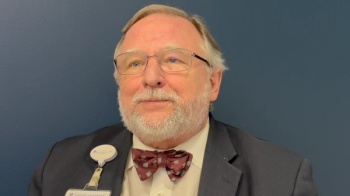
Maintenance Bortezomib: No Improved Depth of Response in “Plateaued” MM
Investigators concluded further investigations are warranted in elderly patients with either stable or responsive disease after bortezomib induction therapy.
Maintenance therapy with biweekly bortezomib did not improve depth of response or prolong progression-free survival in patients with multiple myeloma who were ineligible for transplant and had achieved the plateau phase after bortezomib-based induction therapy, according to results
“These results suggest that a ‘plateau-oriented induction approach’ is inadequate in the era of bortezomib,” wrote Atsushi Isoda, of National Hospital Organization Shibukawa Medical Center, and colleagues. “Further investigations are also warranted to maintain a durable efficacy and avoid any treatment-related toxicity in elderly multiple myeloma patients with either stable or responsive disease after bortezomib induction therapy.”
According to the study, despite the success of front-line therapy, many patients with myeloma will eventually relapse. Researchers continue to attempt to find a way of prolonging the remission phase using maintenance therapy.
In this study, Isoda and colleagues evaluated a group of patients assigned to biweekly bortezomib maintenance therapy at 1.3 mg/m2 for up to 1 year. Patients were transplant-ineligible and had plateaued after bortezomib-based induction therapy.
After induction therapy, 61% of 36 evaluable patients responded to treatment. Responses included stringent complete response (6%), complete response (6%), very good partial response (17%), and partial response (33%). Twenty patients achieved the plateau phase and started bortezomib maintenance therapy.
Among those patients, the median progression-free survival from induction was 13.8 months and, from maintenance initiation, was 10.7 months. According to the researchers, there was no improvement in the depth of response during maintenance treatment.
Compared with two previous studies looking at maintenance therapy, “our present results appear to be unfavorable regarding the median PFS from the start of both the induction therapy (13.8 months) and the maintenance therapy (10.7 months),” the researchers wrote.
The disparity may exist in this phase II study because maintenance therapy was continued up to 1 year instead of until disease progression. However, because half of patients relapsed during the course of 1-year bortezomib maintenance, the researchers said this is unlikely to be the reason for the disparity.
“Another possibility is that our present study had a lower bortezomib dose intensity in induction therapy than these two previous studies,” the researchers wrote. “Our study included a higher proportion of frail patients (34% with Eastern Cooperative Oncology Group performance status 3), which would result in a bortezomib dose reduction at the discretion of the treating physician during the induction therapy.”
During the maintenance phase, treatment-related adverse events occurred in about one-third of patients, but no patients experienced grade 2 or worse peripheral neuropathy.
“To determine the optimum dosage or duration of bortezomib maintenance therapy after bortezomib induction therapy, a randomized trial of different bortezomib-containing regimens should be performed,” Isoda et al wrote.
Newsletter
Stay up to date on recent advances in the multidisciplinary approach to cancer.




![According to John Henson, MD, “What we need are better treatments to control the [brain] tumor once it’s detected.”](https://cdn.sanity.io/images/0vv8moc6/cancernetwork/e0d29c38bb732429ae370e4ef7d1829a10c96446-2992x1684.png?w=350&fit=crop&auto=format)













































































